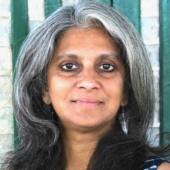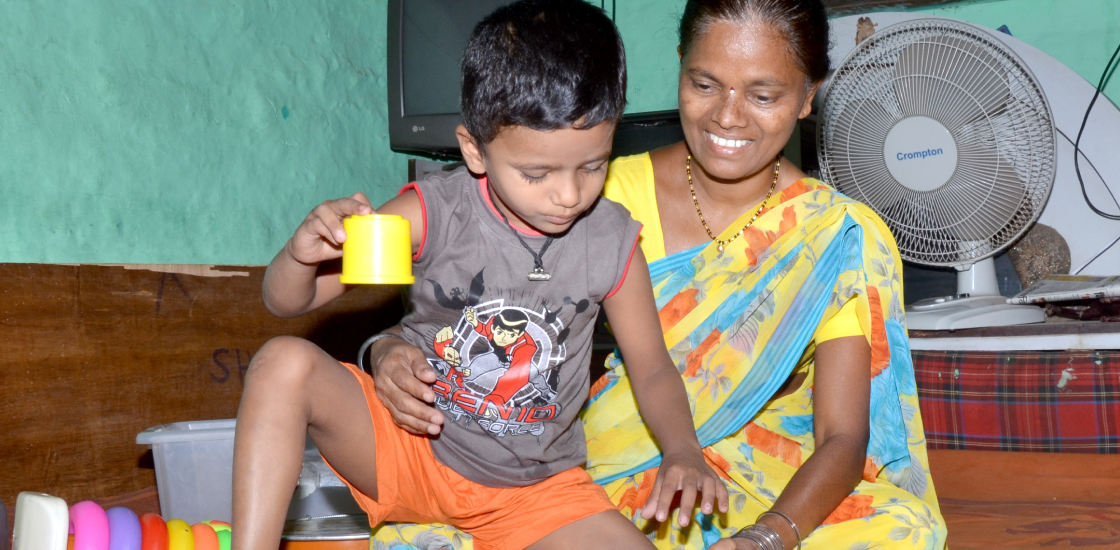THIS ARTICLE IS MORE THAN FIVE YEARS OLD
This article is more than five years old. Autism research — and science in general — is constantly evolving, so older articles may contain information or theories that have been reevaluated since their original publication date.

Families of children with autism may struggle on multiple fronts. That is particularly true in countries such India and Pakistan, which have limited healthcare resources.
Doctors in these countries often have minimal experience with autism and so may fail to recognize its features. When a child does receive a diagnosis, South Asian families still have to find appropriate treatments in centers with suitable therapists, which are typically located in large cities. The families must travel, often long distances, for regular appointments, and this adds to their strain1.
I work at a nonprofit child development center called Sangath in the state of Goa, in western India. In the past 20 years, my colleagues and I have tried to find new solutions for the varied needs of families of children with autism.
We have encountered families from all segments of society, from both rural and urban areas, who have noticed differences between their child’s behavior and that of other children, and are seeking to better understand their child’s needs.
A grant from the nonprofit organization Autism Speaks allowed us to begin adapting an intervention shown to be effective in the United Kingdom. The approach is radical because it involves training non-specialists to support and guide parents, allowing children and families with few resources to receive the care they need and deserve.
Home remedy:
In 2010, Jonathan Green and his colleagues at the University of Manchester in England developed a treatment called the Preschool Autism Communication Therapy (PACT). In the trial, speech and language therapists met with parents of children with autism for 18 sessions, 40 minutes each, over one year.
During each session, a therapist recorded the parent and child playing together. Then the therapist reviewed the video with the parent, and discussed strategies for interacting with the child that the parents could practice in between visits.
For example, parents learned to interpret nonverbal cues from the child and to follow the child’s lead during playtime, waiting for her to make the first move. The children continued to receive other therapies through the U.K.’s National Health Service during the trial.
The approach helps parents become more sensitive to their child’s efforts to communicate, and learn how to respond in ways that foster future interaction, Green’s team reported in 20102. A follow-up study, published last year, found that improvements in social interaction and communication in children whose parents receive the training persisted more than five years after therapy ended3.
One of the strengths of this therapy is that its strategies are documented in a manual. The manual allows for consistency by providing all the therapists with the same core techniques to train parents. The option of providing therapy at home also forestalls the need for families to travel to a treatment center. Finally, the video recordings allow researchers to review the quality of each session.
Powering ahead:
These characteristics seemed to make the therapy ideal for use in South Asia. One remaining problem we faced, however, was a lack of trained autism therapists in the region.
At Sangath, our team has for many years been training ‘lay health workers’ to deliver specialized treatments for mental health conditions. For example, we have used high school graduates to deliver talk therapy for depression or school counseling services. Training lay counselors for short periods to work under the supervision of specialists gives families in low-resource or rural settings access to treatment.
But when we thought to expand this approach to autism, many autism specialists from India and Pakistan warned us that the condition is too complex for its therapies to be handled by lay people. Some of them also expressed concern that conservative families would be reluctant to expose their child or themselves in front of a camera. Still, we powered ahead.
We call our adaptation of PACT the Parent-Mediated Intervention for Autism Spectrum Disorders in South Asia (PASS). We created versions of PASS in different South Asian languages, including Hindi, Marathi and Urdu.
We also adjusted the manuals to make them easier for lay people to follow. For example, we altered the order in which we introduced techniques and simplified the descriptions of key concepts. And we recruited supervisors to help the lay health workers adapt the therapy to each child’s needs — in some cases, adjusting the pace at which they introduce new strategies.
Since January 2013, we have conducted two randomized, controlled trials of PASS in three settings in India and Pakistan. The first trial involved 65 children. About half the parents received the training through 12 sessions over six months, along with standard care. The children in the other families received only standard care. The second trial had a similar design, but included only 40 children in India.
Gaining confidence:
There were myriad unexpected challenges. Small, poorly lit rooms made for low-quality video, and torrential rain on metal roofs interfered with the audio. Laptops didn’t always work.
What’s more, parents were nervous at the initial sessions — not because of the video, but because they were wary of the approach.
In the case of most autism treatments, therapists simply tell parents what to do. But PASS is more reflective than directive. The lay counselor and parent review the video and, with guidance, think together about what they can do to help the child communicate better. That idea took some getting used to for the parents.
Eventually, they adapted: They realized that the lay counselor’s job was to help them better understand their child’s communication needs. Almost universally, we saw caregivers develop greater confidence in their knowledge of autism and how it affects their child4.
This confidence allowed them to think about how to incorporate the counselor’s suggestions into their daily routines to change how they interacted with their child. One mother described PASS as not only “making a change in my child, but also making a change in me.”
The video feedback was critical to this process: Seeing their interactions with their child often gave parents insights into how to implement a strategy. As another mother said, “The mother will see it, so she will remember … she will understand.”
Our trial has received overwhelmingly positive feedback from families. When we followed up with 10 of the families from India two years later, we discovered that they were still using many of the strategies we had taught them.
We found that the key is giving parents skills that allow them to generalize strategies across multiple areas of the child’s life. In this way, we have helped parents become their child’s personal therapist.
Gauri Divan is a pediatrician at Sangath, a non-governmental agency in Goa, India.

By joining the discussion, you agree to our privacy policy.